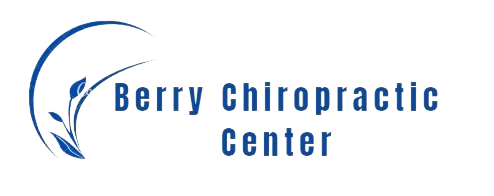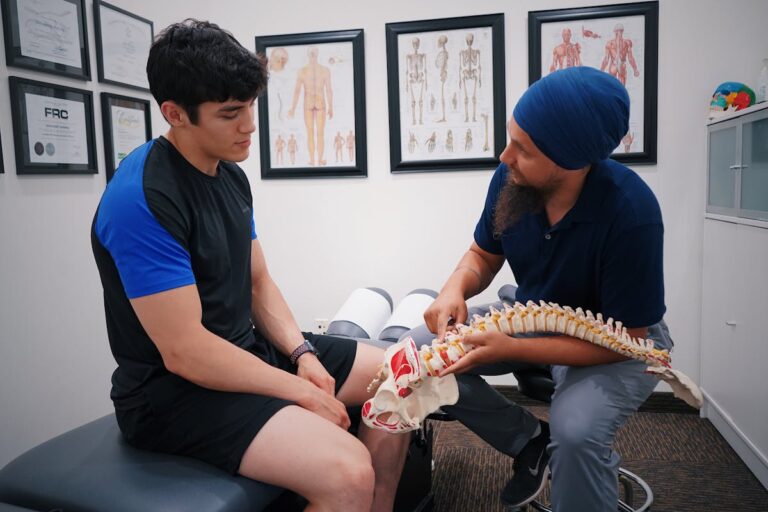Chiropractic adjustments can lead to the release of metabolic waste products, including lactic acid and inflammatory mediators. This realignment of the spine enhances circulation, aiding in toxin expulsion. Proper understanding and management of these toxins can boost health. The key question is: how can we optimally support our bodies during this detoxification? This is an important topic to investigate.
Understanding Chiropractic Adjustments
A chiropractic adjustment, or spinal manipulation, is a precise procedure performed by trained chiropractors. They apply a controlled, unexpected force to a spinal joint using their hands or small instruments. The primary goal is to enhance spinal motion and physical function.
The techniques used in chiropractic adjustments, such as diversified technique, gonstead adjustment, or the activator method, are not random or harmful. Instead, they are based on comprehensive anatomical knowledge and clinical evidence, tailored to the patient’s needs.
These techniques aim for safe, effective spine realignment, reducing discomfort and maximizing health benefits. Post-adjustment, toxins are released, which is part of the process. Understanding the science behind chiropractic adjustments helps dispel misconceptions and highlights their health benefits.
The Role of Toxins in Our Body
Toxins, either endogenous or exogenous, are crucial in human physiology. Endogenous toxins stem from within, like lactic acid due to physical exertion. Exogenous toxins come from outside sources, including pollutants, pesticides, or food additives.
The body’s detoxification system, primarily the liver, neutralizes these toxins. Other organs, such as kidneys, lungs, and skin, aid in toxin elimination.
Nevertheless, excess toxins can overwhelm this system, disrupting physiological functions. Even natural metabolic byproducts must be managed carefully for optimal health. Understanding toxin roles is pivotal to realizing the impacts of chiropractic adjustments.
Toxins Accumulation and Health Problems
Accumulated toxins in the body can cause health issues by disrupting normal biological functions. These issues occur when the body’s detoxification systems are overwhelmed, leading to a build-up of harmful substances. The release of toxins after chiropractic adjustments, particularly concerning the body’s post-adjustment detoxification response, is discussed.
Understanding Toxin Build-Up
Toxins, sourced from pollutants, diet, stress, and lifestyle, accumulate in the body, leading to health issues. The belief that chiropractic adjustments release these toxins is a myth. Actually, adjustments improve circulation, aiding toxin elimination. Recognizing this helps understand chiropractic care’s real benefits and limitations.
Detoxification Post-Adjustment
Detoxification after adjustment is a vital process to mitigate health risks linked to toxin accumulation. It often involves personalized detox diets.
- Detox diets recommend nutrient-dense, antioxidant-rich foods for effective toxin removal.
- Hydration supports kidneys in toxin filtration from the bloodstream.
- Specific supplements may enhance detoxification.
- Regular physical activity boosts circulation and toxin elimination via sweat.
Emotional responses such as anxiety or relief may occur due to body adjustments during detoxification.
How Chiropractic Adjustments Work
Chiropractic adjustments employ manual manipulation to enhance bodily function and reduce pain. They counteract vertebral subluxations, or spinal misalignments, that could disrupt nervous system function. Through controlled force applied to the spinal joint, chiropractors realign the spine. This facilitates nerve impulse transmission and muscular balance, promoting health and wellness.
Post-adjustment biomechanical response plays a crucial role. Adjustments can modify joint biomechanics, lessening strain on adjacent tissues, and promoting healing. The force applied during an adjustment instigates physiological responses that bolster the body’s self-regulating abilities.
Chiropractic adjustments, grounded in science, dispel misconceptions. They primarily aim to augment the body’s innate healing capabilities via targeted spinal manipulation, despite the known effect of toxin release.
Toxins Released During Chiropractic Adjustments
Exploring the complex process of toxin release during chiropractic adjustments involves understanding the underlying mechanisms, identifying the toxins released, recognizing associated symptoms, and managing them effectively. Each component is crucial for an in-depth investigation.
Understanding Chiropractic Toxin Release
Chiropractic adjustments trigger a natural toxin release in the body. ‘Toxin’, in this context, refers to metabolic waste released during adjustments, not harmful substances. The belief that adjustments ‘force’ toxins out is a myth; they merely facilitate natural toxin release. This toxin release is a physiological response to the body’s musculoskeletal system’s realignment. Despite being termed ‘toxins’, these substances contribute to health improvement post-release.
Types of Released Toxins
Chiropractic adjustments trigger toxin release, including lactic acid, a muscle metabolism byproduct. The aftermath also involves the discharge of inflammatory mediators like cytokines and chemokines, key to immune response. Cell membrane breakdown liberates phosphatase and kinase enzymes, causing discomfort in high concentrations. Lastly, bacterial waste products, or endotoxins, might be released, complicating detoxification. Understanding these toxins is crucial for managing chiropractic adjustment effects.

Managing Toxin Release Symptoms
To manage toxin release symptoms post-chiropractic adjustment, adopt these four strategies:
- Hydration: Ensures toxins flush out, reducing headaches and fatigue.
- Rest: Facilitates effective toxin elimination through adequate sleep.
- Exercise: Stimulates circulation, accelerating detoxification with light physical activity.
- Toxin Diets: Enhances natural detoxification via diet rich in antioxidants, fibre, and lean proteins.
These strategies, studied individually or synergistically, help manage toxin symptoms post-adjustment.
The Significance of Post-Adjustment Detoxification
Post-adjustment detoxification, a crucial process following a chiropractic adjustment, expels toxins thus enhancing treatment efficacy. It’s essential to debunk detoxification myths for better understanding.
Accumulated toxins hinder the body’s ability to heal naturally, underscoring detoxification’s role in holistic wellness. Post-adjustment detoxification eliminates toxins, fostering an environment conducive to optimal function of self-healing mechanisms.
Scientifically, detoxification stimulates the lymphatic system, the body’s primary waste removal system. Chiropractic adjustments release trapped toxins originating from stress, poor diet, or environmental pollutants into the bloodstream. Without proper expulsion, these toxins can intensify inflammation and pain. Post-adjustment detoxification flushes out these toxins, reducing potential adverse effects.
The Healing Reaction Post-Adjustment
Chiropractic therapy’s post-adjustment healing reaction, a critical phase, involves the body’s response to toxin release. This text explores the healing process, identifies released toxins post-manipulation, and discusses reaction management strategies. Understanding this process is crucial for grasping the holistic impact of chiropractic adjustment on the body’s biochemical balance.
Understanding the Healing Process
Post-chiropractic adjustment triggers the healing reaction in the body, a complex healing process.
- Inflammation: The body’s response to adjustment is inflammation, a key immune function. It enhances blood flow to the area, supplying essential nutrients and repair cells.
- Cellular Regeneration: Cellular regeneration replaces damaged cells. It involves the growth and maturation of new cells.
- Immune Response: The immune system eliminates damaged cells and protects against potential pathogens introduced during the adjustment.
- Restoration: The body ultimately reverts to its normal state, inflammation decreases, and tissues heal. This completes the healing reaction. Understanding this process is vital for appropriate post-adjustment care.
Identifying Post-Adjustment Toxins
Post-adjustment healing triggers toxin release, including metabolic wastes, into the bloodstream due to Adjustment Repercussions. Identifying these toxins, such as lactic acid from muscle metabolism, is crucial for assessing chiropractic adjustment impacts. Cell breakdown also produces toxins like free radicals, causing oxidative stress. This toxin release is a normal part of body’s repair and rejuvenation post-adjustment.
Managing Healing Reactions
Comprehending and managing patient reactions post-adjustment is crucial for recovery and well-being. Patients often exhibit varied emotional and physical responses.
To manage these:
- Emotional Support: Promote open dialogue about experienced emotions for better understanding and coping.
- Nutritional Support: Encourage antioxidant-rich diet and hydration for toxin elimination.
- Rest: Stress on sufficient rest for facilitating natural healing.
- Follow-Up Treatments: Regular chiropractic sessions for discomfort management and faster recovery.
These steps reduce the adverse effects of toxins released post-adjustment, enhancing patients’ health outcomes.
Importance of Hydration After Adjustments
Post-adjustment hydration plays a crucial role in toxin expulsion, metabolic processes enhancement, and overall body function. Water intake post-chiropractic adjustment boosts detoxification pathways, facilitating kidney function, the body’s primary filtration system. It dilutes toxins and waste, promoting efficient excretion.
Hydration also improves circulatory system function by increasing blood volume, enabling efficient oxygen and nutrient transport to cells and waste removal from cellular metabolism. This is particularly critical post-chiropractic adjustment due to potential toxin release from musculoskeletal manipulations.
Lastly, hydration aids lymphatic system function, a key detoxification component. Adequate hydration enables smooth lymph movement, a waste-carrying fluid, away from body tissues.
Tips to Enhance Toxins Elimination
To enhance toxin elimination post-chiropractic adjustment, adhere to these strategies:
- Hydration: Drink fluids to flush toxins via kidneys and maintain a healthy digestive system.
- Balanced Diet: Eat a diet rich in antioxidants and anti-inflammatory foods, such as fruits, vegetables, and whole grains, to boost detoxification.
- Physical Activity: Regular exercise stimulates the lymphatic system for toxin removal and promotes detoxification through sweat.
- Quality Sleep: During sleep, the body rejuvenates and detoxifies, eliminating daily waste accumulation.
Real-Life Experiences: Case Studies
Several case studies depict the effects of chiropractic adjustments, focusing on pain relief, mobility improvement, and toxin release. One case shows a patient’s migraines reducing post-adjustment, despite initial flu-like symptoms from toxin release. Another case highlights an athlete’s performance enhancement and lower back pain relief after treatment. Initial discomfort from toxin release subsided with self-care. These cases stress the need for patient awareness about potential discomfort and the importance of managing toxin release post-adjustment.
The Role of Regular Adjustments
Regular chiropractic adjustments play a crucial role in health maintenance and physical function enhancement. These adjustments, when implemented appropriately, can substantially boost musculoskeletal and nervous system performance. It’s a misconception to consider frequent adjustments potentially harmful or unnecessary. The adjustment frequency is dictated by multiple factors such as overall health, condition severity, and physical response to treatment.
Understanding the role of regular adjustments, we note:
- Misalignment Correction: Regular adjustments rectify spinal misalignments, potential causes of pain and nervous system function disruption.
- Degeneration Prevention: Regular chiropractic care averts joint and connective tissue degeneration, enhancing mobility and operation.
- Nervous System Function Enhancement: Regular adjustments, by improving spinal health, boost nervous system function, leading to overall health improvement.
- Toxin Release: Regular adjustments aid in body detoxification and overall wellness by facilitating toxin release.
However, it’s crucial to remember that individual needs and treatment responses vary, necessitating a custom approach to adjustment frequency.
The Long-Term Benefits of Chiropractic Care
Chiropractic care offers long-term benefits such as cost-effectiveness, insurance coverage, health enhancements, and stress management. The initial ‘Chiropractic Costs’ may be high, but overall, it is a cost-effective healthcare approach as it can prevent future pain and reduce the need for invasive, costly medical procedures. It’s usually covered by many insurance policies, making it financially accessible. Chiropractic care provides health improvements by enhancing posture, strengthening immunity, and increasing energy. It aligns the body’s structure, promoting natural healing without surgery or medication, beneficial for long-term health. It also aids in stress management by decreasing body tension, improving mental clarity, and sleep patterns. These benefits contribute to a better life quality.
Frequently Asked Questions
Can Chiropractic Adjustments Cause Any Harmful Side Effects?
Chiropractic adjustments pose certain risks despite their general safety. Unusual, yet possible side effects include minor discomfort, headaches, and fatigue. Serious complications like allergic reactions to therapy materials seldom occur, but remain potential adjustment hazards.
Is There a Limit to How Many Chiropractic Adjustments One Should Have?
Chiropractic adjustment frequency depends on individual health conditions. No established limit exists, but over-adjustment risks from excess appointments. Treatment response guides regular scheduling.
Are Specific Diets Recommended to Enhance Toxin Elimination After Adjustment?
Post-adjustment, specific diets with detoxification foods and dietary supplements can potentially boost toxin elimination. Personalizing these diet recommendations, however, is crucial considering each individual’s health status and nutritional needs.
Do Chiropractic Adjustments Interact With Any Medications or Treatments?
Chiropractic adjustments can interact with certain medications or treatments. To ensure compatibility and avoid adverse effects or reduction in treatment efficacy, consultation with healthcare professionals is essential.
Can Chiropractic Adjustments Help With Specific Conditions Like Migraines or Sciatica?
Chiropractic adjustments may aid in preventing migraines and managing sciatica pain. These adjustments could reduce migraine frequency and intensity, and address the root cause of sciatica through spinal manipulation.






